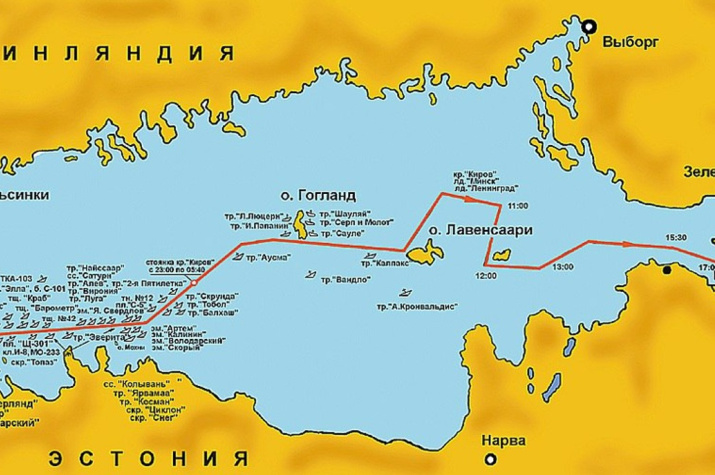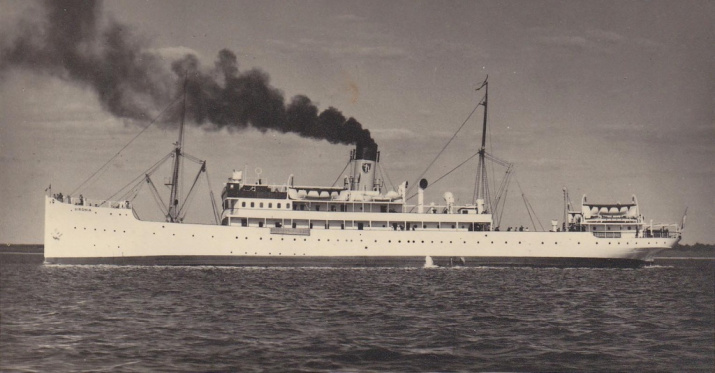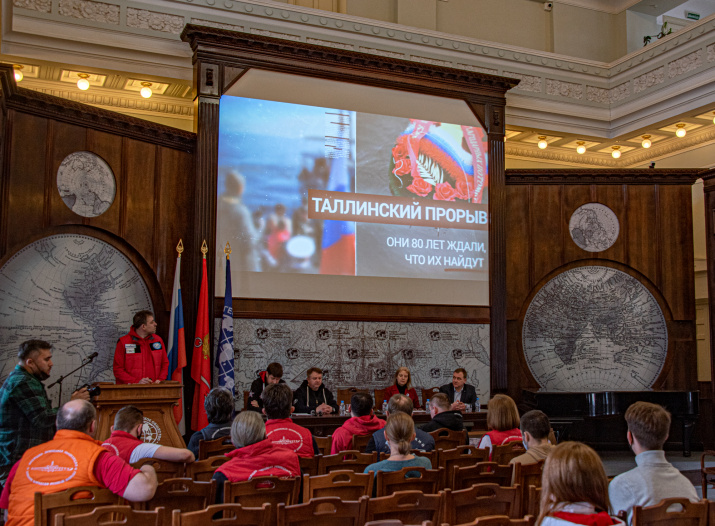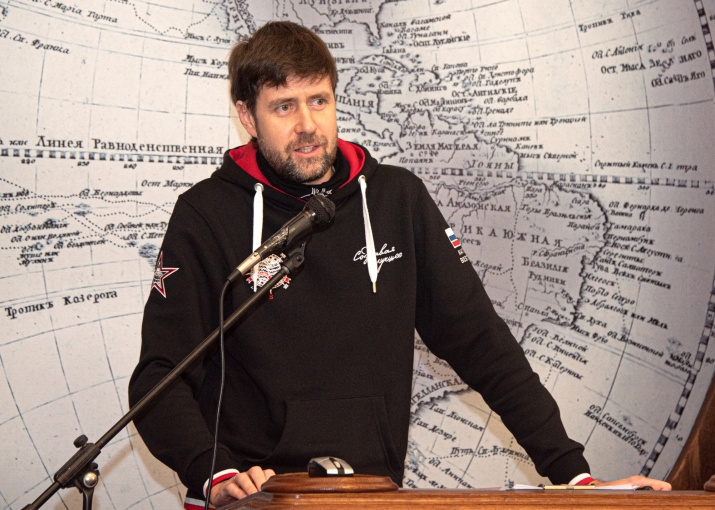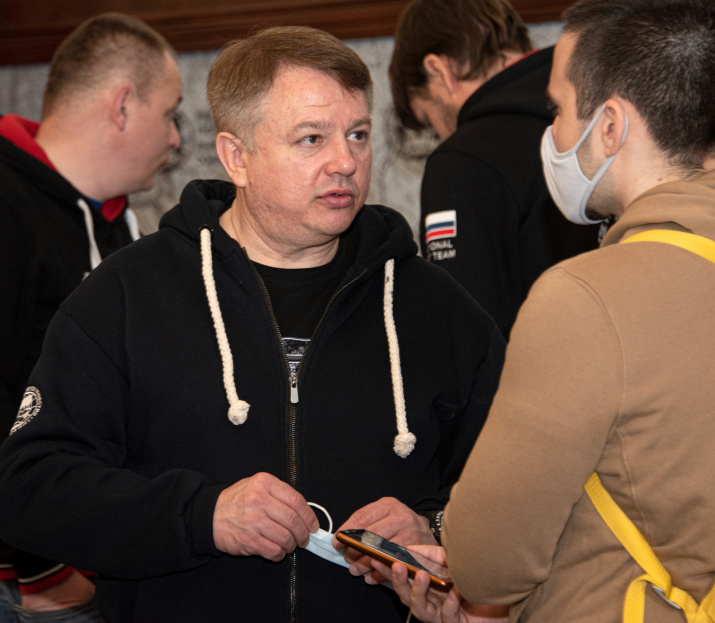On May 5, 2021, begins the expedition under the auspices of the Russian Geographical Society "180 miles to Leningrad: the history of the Tallinn breakout on the modern map". This was announced at a press conference at the Headquarters of the Russian Geographical Society in St. Petersburg. From May to August, the divers will have to find and identify a dozen or so ships that sank at the very beginning of the Great Patriotic War during the Tallinn breakout, which has become one of the most tragic and still unclosed chapters of the war.
Within three days, from 27 to 29 August 1941, more than 60 military and transport ships and over 15 thousand Soviet citizens perished in the waters of the Gulf of Finland. This was preceded by the decision to relocate the Baltic Fleet from Tallinn (the main base was located there) to Kronstadt. The operation took place urgently after German troops broke through to the Baltic region. Had it not been for the maneuver, which went down in history as the Tallinn disaster, the USSR could have completely lost its fleet in the Baltic region, and Leningrad would have been left without protection from the sea. All this, most likely, would have had disastrous consequences for the entire course of the Great Patriotic War.
Presenting the research program, the head of the expedition, Konstantin Bogdanov, noted that a lot of work with documents was done by the chief navigator of the USSR Navy, rear admiral Radiy Zubkov, who wrote the most complete history of the Tallinn breakout. In addition, Russian and Estonian specialists carried out hydrographic studies of the seabed in the area of the tragedy. However, most of the vessels have not been identified and the map of their location at the bottom of the Baltic Sea needs to be clarified.
The convoy suffered the main losses in the minefields in the area of Juminda peninsula, now part of Estonia. However, in the next two days, the ships that managed to pass through the minefields were subjected to a massive air attack. Lacking effective air defense systems and practically without air support, the ships turned out to be easy targets.
Today, historians argue whether this tragedy was a military error or the inevitability of war, but the search teams and relatives of the victims of those events are interested in the restoration of historical memory. The sunken ships are the largest mass grave in the Baltic region. Therefore, the end of the expedition will be marked by memorial events on Gogland Island on August 29, the day of the 80th anniversary of the Tallinn disaster.
And today, on Diver's Day in Russia, a group of submariners from the reconnaissance and diving team of Konstantin Bogdanov, with the technical support of the “Fertoing” engineering company, moved to the area of Moschny Island. To the southwest of it, four sunken ships had been previously found. These ships managed to cross the minefield, but sank as a result of a raid by German aircrafts. Presumably, we are talking about the “Topaz” patrol boat and the “Atis Kronvalds”, “Järvamaa” and “Alev” transports.
The divers will study them first of all. And after receiving permission for diving in the territorial waters of Estonia, which now owns Juminda peninsula, other sunken ships will be investigated.
Konstantin Bogdanov says that there is a lot of work ahead. It is physically difficult for a small expeditionary team to identify all the ships sunk during the Tallinn breakout.
“This season we will deal with those of them where the largest number of people – military and civilians – died,” clarifies Konstantin Bogdanov. “This is a very unusual operation for us. It is one thing to find a submarine with a crew of 50–70 people. And quite another – a large ship carrying several thousand people. We can't even imagine what finds await us yet ...”
Another result of the RGS expedition will be the creation of an interactive map with the exact coordinates of the sunken ships and their 3D models.
The divers hope that the search results will be of interest not only to Russians, but also to the Estonian public, which will serve to improve relations between our peoples.
The current expedition became a logical continuation of the "A Bow to the Ships of the Great Victory" project, started by Konstantin Bogdanov and his team back in 2005. In 15 years, search specialists have found and identified 16 submarines. Since 2012, the team has been working mainly in the Baltic Sea. Among other things, in 2014 the divers discovered the “Vaindlo” transport, which later was evacuating the surviving participants of the Tallinn breakout; and in 2018, the destroyers “Kalinin” (“Pryamislav”) and “Yakov Sverdlov” (“Novik”), which were the part of the convoy. In addition, the divers of the Underwater Research Center of the Russian Geographical Society have been studying another vessel from the tragic list – the T-12 tanker – for several years.
Artyom Melnikov, director of the “Fertoing” engineering company, hopes that the results of the expedition will become a kind of virtual museum based on the geoinformation model of the operation, as well as photos and videos taken by the expedition members.
“The large database will be important both for historians studying the events of the Great Patriotic War and for the citizens of Russia, so that they can be inspired by the exploits of their predecessors. We are forming a new layer of the maritime history of our country,” said Artyom Melnikov.
The head of the public organization "Memory of the Tallinn Breakout" Maria Inge-Vechtomova, whose grandfather (the poet Yuri Inge) died in that tragedy, noted that this story has an important human aspect to it. She conveyed wishes of success from the participant of the Tallinn breakout Vasily Pavlovich Dzhurdzhi, who is now 100 years old, and his wife Tatyana Petrovna Sergeeva, who is also the granddaughter of the participant in that operation.
“The new project to search and perpetuate the memory of the participants in the Tallinn breakout is a major milestone in the study of Russian history, in the study of the history of the Great Patriotic War, in the popularization of knowledge of the great and tragic events that took place in the initial period of the war,” stressed the Director of the Expeditionary Department and Tourism Development of the Russian Geographical Society Sergey Chechulin.
Tallinn breakout: numbers and facts
Evacuation of the main forces of the Baltic Fleet under the command of Vice Admiral Vladimir Tributs from Tallinn to Kronstadt at the end of August 1941. 225 ships and vessels left Tallinn.
Including:
- 151 warships,
- 74 vessels: 20 transports and 54 auxiliary vessels.
163 units reached Kronstadt:
- 132 warships,
- 29 auxiliary vessels,
- 2 transports,
- an unspecified number of low-tonnage civil ships and floating crafts not subordinate to the Military Council of the Navy.
62 ships and vessels were sunk in transit:
- 19 warships and boats,
- 25 auxiliary vessels,
- 18 transports.
According to Radiy Zubkov, about 40 thousand people were evacuated from Tallinn, including crews, troops, civilians.
As a result, 26,881 people were delivered to Kronstadt.
More than 15 thousand people died:
- 8600 servicemen of the fleet and 143 fleet civilians
- 1740 ground forces soldiers,
- 4628 civilians.
The main forces of the fleet arrived in Kronstadt together with people, military and technical cargo, material resources.
Aivar Valeev

